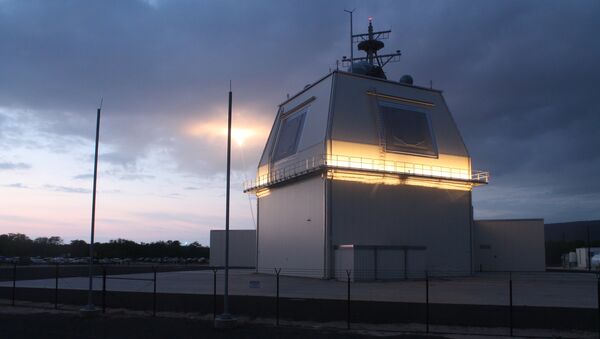By 2023, Japan wants to have an operational land-based version of the Aegis ballistic missile defense (BMD) system as an answer to advances Pyongyang has made in its ballistic missile program.
According to Reuters, the range of the powerful Spy-6 radar is needed to accommodate a new generation of BMD interceptor missiles. Without it, Japan will be forced to field the Aegis system with its current radar technology, which has a shorter range.
This means that even though the interceptor has the range to strike a high-flung missile, the radar won’t be able to detect the projectile until it becomes closer to land. The Spy-6 technology boosts the radar dozens of times over, but Tokyo has not been successful in its effort to procure the radar from Washington.
Japan is particularly worried about threats from the Democratic People’s Republic of Korea (DPRK) after the communist nation fired an intermediate-range ballistic missile over the northern Japanese island of Hokkaido on Monday, a move North Korean leader Kim Jong-un said was a prelude to a possible attack on Guam, according to North Korean media.
Japanese Prime Minister Shinzo Abe responded to the launch, saying, "This reckless act of firing a missile over our nation is an unprecedented, serious and significant threat, one that seriously diminishes the peace and safety of the region, and as a result we have lodged a firm protest against North Korea."
In the midst of a war of words between Kim and US President Donald Trump, the DPRK threatened to rain "an enveloping fire" on Guam. He later appeared to relent after the US expressed interest in diplomatic talks, with Kim saying he "would watch a little more the foolish and stupid conduct of the Yankees," before making a final decision, North Korean state media report.
Japan has asked Washington for the radar informally, but has not ordered it, and though the US promised to furnish the technology, it has not been forthcoming. One source told Reuters, "There is no guarantee that Japan is going to get it."
US officials may be hesitant to release the technology before they get a chance to field it themselves, as Washington’s first warship featuring a Spy-6 equipped Aegis system isn’t set to enter service until 2022.
The United Nations released a statement condemning Tuesday’s launch, saying that North Korea’s actions were "deliberately undermining regional peace and stability and have caused grave security concerns around the world."




